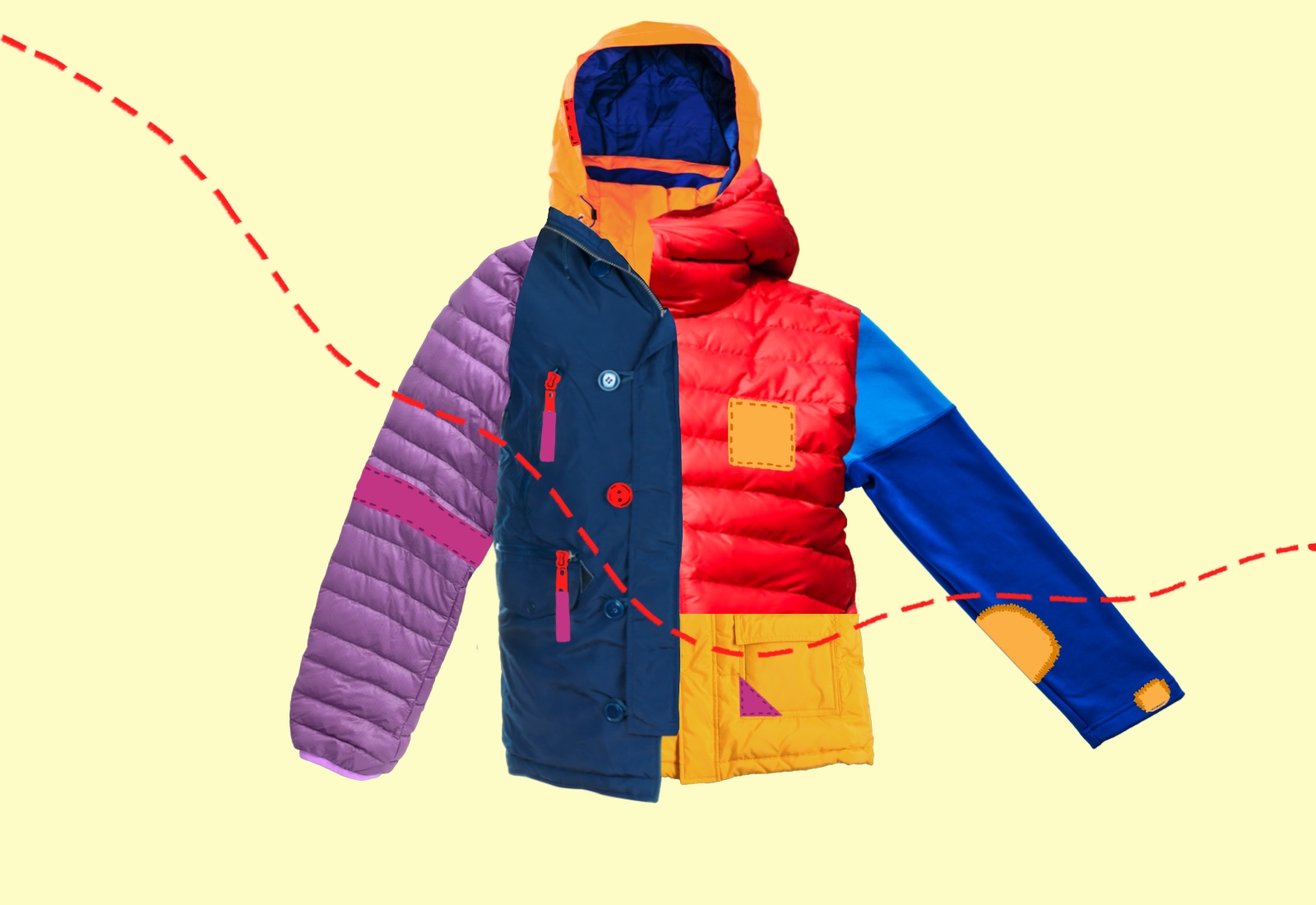
A few days after the outdoor apparel brand Arc’teryx opened a new location in New York City last November, a man stopped by in need of a jacket repair. He was from Massachusetts, and had been ski touring in the Berkshires with the same Arc’teryx coat for more than 10 years. “It was just completely shredded,” said Adam Grossman, the store manager. “I told him I’d do what I could.”
The store housed Arc’teryx’s first in-store repair center, outfitted with two large work tables and drawers full of zippers, patches, and cords. There was a heat press for applying GORE-TEX patches to jackets, a depiller to remove fuzz from sweatshirts, and a machine that shot out water to test waterproof jackets.
Across from the repair space stood another first: a used gear section, where dozens of pre-owned, cleaned, and sometimes refurbished pieces of Arc’teryx apparel hung neatly on racks. An Arc’teryx jacket can run you $1,000, but these items were about a third of their original price. Grossman showed the customer a used coat with a much more durable fabric than the one he had, and the man bought it. The man was delighted, he told Grossman. For environmental reasons, he only bought secondhand.
The customer’s reluctance to buy a brand-new jacket makes sense. Beyond the sheer cost of replacing items, the fashion industry’s environmental footprint is staggering. CO2 emissions from textile production topped 2.1 billion tons in 2018, more than the emissions of France, Germany, and the UK combined. A McKinsey analysis found that the fashion industry would need to cut emissions in half by 2030 to align with the Paris Agreement goal of limiting global warming to 1.5 degrees Celsius. Textile production – including cotton farming – uses about 93 billion cubic meters of water a year, and utilizes harmful pesticides and chemicals.
The industry’s outsized impact has grown in tandem with the rise of fast fashion. Retailers like H&M, Zara, and Shein release new items at lightning speed and sell them at prices that are cheap enough that people can constantly refresh their wardrobes. McKinsey found that annual clothing production exceeded 100 billion garments in 2014, more than double what it was at the start of the millennium. Consumers are also keeping their clothes for half as long, according to the report, discarding some pieces after seven or eight wears.
Enter resale, or the curated selling of used clothes, which has the power to put a sizable dent in apparel’s environmental impact. “Even with the shipping, the transportation, the cleaning, the storage, a resale item carries a carbon footprint that’s about five to 15 percent the size of making a new thing,” said Nellie Cohen, who built and directed Patagonia’s recommerce program until 2018.
Resale has exploded in the last decade, thanks to startups like Poshmark, Depop, and ThredUP, which are fashion-focused online marketplaces for secondhand clothes. The resale market is expected to triple in size from 2021 to 2025, to $47 billion.
Until recently, only veteran climate do-gooders like Eileen Fisher and Patagonia were selling used clothes themselves. But in the last two years, resale has broken into the mainstream: Levi’s, Madewell, and lululemon all have online secondhand shops.. Timberland will start selling used, refurbished boots online this spring. Now that customers can buy clean, vetted, and curated secondhand items directly from their favorite brands, there is a chance that buying used clothes could become as natural as buying new. But whether resale benefits the planet will depend on if it actually offsets consumption, or promotes it.
Eileen Fisher was the first major retailer to start a resale program in 2009. It began as a grassroots effort to collect employees’ used garments, resell them to customers, and donate the proceeds to Eileen Fisher’s charity foundation.
Resale fit naturally into the company’s well-known design ethos, which is built around a wardrobe of timeless, monochrome pieces that can easily be mixed and matched and last for many years. “Our whole business is targeted to durable, simple dressing,” said Carmen Gama, director of circular design. “We’ve had returns of garments that are 30 years old and they’re still completely wearable.”
The “Renew” program was so popular that the company quickly expanded it. There are two Renew stores in New York and Seattle, and the company sells used clothes at some of its main locations as well. They launched a Renew online store in 2017. The program even includes a line called “Not Quite Perfect,” which contains pieces with slight blemishes, like pilling or a small pull, which are sold at a larger discount.
